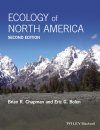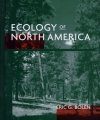About this book
North America contains an incredibly diverse array of natural environments, each supporting a unique system of plant and animal life. These systems – also known as biomes – are tightly woven webs of life that have taken millennia to evolve. This richly illustrated book introduces readers to this extraordinary array of natural communities and to the subtle interactions of minerals, plants, and animals that take place within them.
Completely revised and updated throughout, the Second Edition of this successful text takes a qualitative, intuitive approach to the subject, beginning with an overview of essential ecological terms and concepts, such as competitive exclusion, taxa, niches, and succession. Then, biome by biome, he covers the entirety of Canada and the United States, starting with the tundra of the far north and working his way south and then west to conclude in the deserts and chaparral of southern California. Along the way, he delves into pertinent conservation issues and features fascinating historical vignettes and original documents detailing human impact on various environments – for instance, the role of John Deere's plow in settling grasslands, and the use of fur records from Hudson's Bay Company. Throughout, he enlivens the text with dozens of exquisite photographs and illuminating maps, graphs, charts, and tables.
Ecology of North America is an ideal first text for students interested in natural resources, environmental science, and biology, and it is a useful and attractive addition to the library of anyone interested in understanding and protecting the natural environment.
Several substantial and important changes will be included in the new edition. These include:
1. Addition of BRC as the primary author; he assumed the leadership for preparing, organizing, and oversight needed to bring the work to fruition. BRC is an accomplished vertebrate zoologist and field biologist; his work includes dozens of papers published in a broad range of professional journals. His insight brought fresh perspectives to the project, not the least of which was the inclusion of a new
4. Additional topics added to the chapter, A Selection of Special Environments, including the Great Lakes, mineral licks, Mississippi River, and fossil sites such as the La Brea tar pits and Burgess shale.
5. Addition of self-standing “Infoboxes” throughout the text. These include biographical sketches (e.g. John Muir, Victor Shelford, and Rachel Carson) and selected species and their conservation (e.g., Island foxes and Atlantic puffins).
6. Updates for situations, among them the disease now threatening bat populations in several states and provinces, discovery of a new monotypic family of cave spiders, and new findings concerning the ecology of redwoods.
7. Major concepts related to energy flow, biogeography, niches, trophic cascades, and competitive exclusion, continue to be included and illustrated with appropriate examples.
8. New citations of pertinent literature appearing since publication of the first edition.
9. Additions to the Glossary.
10. A new Foreword by (TBA).
11. As with the first edition, the new text continues to broaden its appeal by including mention of items concerning anthropology, history, and geology (e.g., the “kelp highway” and the origins of American paleontology at Big Bone Lick, Kentucky).
Customer Reviews




































